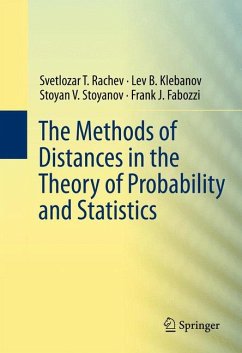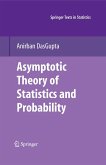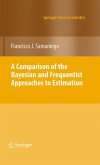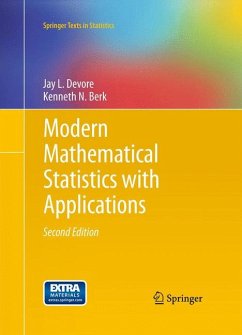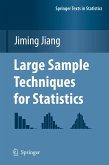After describing the basic structure of probability metrics and providing an analysis of the topologies in the space of probability measures generated by different types of probability metrics, the authors study stability problems by providing a characterization of the ideal metrics for a given problem and investigating the main relationships between different types of probability metrics. The presentation is provided in a general form, although specific cases are considered as they arise in the process of finding supplementary bounds or in applications to important special cases.
Svetlozar T. Rachev is the Frey Family Foundation Chair of Quantitative Finance, Department of Applied Mathematics and Statistics, SUNY-Stony Brook and Chief Scientist of Finanlytica, USA. Lev B. Klebanov is a Professor in the Department of Probability and Mathematical Statistics, Charles University, Prague, Czech Republic. Stoyan V. Stoyanov is a Professor at EDHEC Business School and Head of Research, EDHEC-Risk Institute-Asia (Singapore). Frank J. Fabozzi is a Professor at EDHEC Business School. (USA)
Dieser Download kann aus rechtlichen Gründen nur mit Rechnungsadresse in A, B, BG, CY, CZ, D, DK, EW, E, FIN, F, GR, HR, H, IRL, I, LT, L, LR, M, NL, PL, P, R, S, SLO, SK ausgeliefert werden.
"This textbook gives a comprehensive overview of the method of metric distances and its applications in probability theory. ... The text is mainly self-contained and should be accessible for readers with basic knowledge in probability theory. The exposition is well structured and covers an impressive range of topics around the central theme of probability metrics." (Hilmar Mai, zbMATH, Vol. 1280, 2014)
"The reviewed book is divided into five parts. ... The target audience is graduate students in the areas of functional analysis, geometry, mathematical programming, probability, statistics, stochastic analytics, and measure theory. The book can also be used for students in probability and statistics. The theory of probability metrics presented here can be applied to engineering, physics, chemistry, information theory, economics, and finance. Specialists from the aforementioned areas might find the book useful." (Adriana Horníková, Technometrics, Vol. 55 (4), November, 2013)

